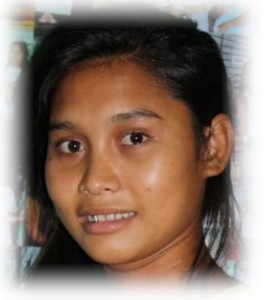
The nomadic Badjao (also, Sama-Bajau) are not only fishermen and sea navigators whose seaborne lifestyle comes as second nature but also keepers of traditions, culture, and stories centering around sea life. These so-called “sea gypsies” are dispersed all over Southeast Asia—Sulu, Celebes Sea, Tawi-Tawi, Basilan, regions of Zamboanga del Sur in the ARRM, in the Philippines; Sabah in Malaysia; and Sulawesi and Kalimantan in Indonesia, to name just a few.
Life is not easy for the Sama-Bajau of the Philippines. A large number of Badjao have migrated to neighboring countries, and they now form the second-largest ethnic group in Sabah. Despite this, their rich oral traditions of princesses, sultans, and giant stingrays, as well as these nomadic seafarers’ boat-dwelling lifestyle, are all fascinating to explore.
Kingdoms, Mythologies, and Modern Research
Most oral traditions of the Sama-Bajau are themes of tarsila (royal genealogies), which can be summed up with the central theme of previously land-dwelling people whose quest is to return their lost princess to their king. However, after failing to do so, they have chosen to hide for fear of their king’s wrath, driving them into the nomadic lifestyle.
One particular story of Borneo involves a princess named Dayang Ayesha, who was supposed to marry a ruler of Sulu but was instead captured by Bruneians and had to marry a Sultan of Brunei. Another is that of the Indonesians’ lost princess who was washed away by a flood, and when later found, was married off to the king of Gowa. Interestingly, the story of the Philippine Sama-Bajau is that of a mythological theme, with the Sama-Bajau people being accidentally hauled by a stingray into what is now known as Zamboanga.
However, all these legends are invalidated through the various research conducted in the modern era. Most recently is the 2021 genetic discovery of the link of the Sama-Bajau of the Philippines with Indonesia through the so-called “Sama ancestry” genetic signal. This is proof that they are actually descendants of the Austroasiatic-affiliated hunter-gatherer groups from mainland Southeast Asia, which were scattered due to the sunken bridges of Sundaland around 15,000 to 12,000 years ago.
Harsh Stereotypes
Living a nomadic lifestyle may have its perks, but it also has lots of drawbacks. This is why the Sama-Bajau, even if mostly regarded as peaceful, hospitable, and cheerful people, have alarming numbers of illiterate, uneducated, and impoverished persons in their population. With the continued conflict in Muslim Mindanao, the Badjao people were driven out of the seafaring lifestyle and into the suburbs, where they find themselves trying for manual labor jobs in Sabah, Malaysia; and in the northern coast of Mindanao, Visayas, Palawan, and all the way up to southern Luzon in the Philippines.
In 2016, a project by the Philippine Bureau of Fisheries and Aquatic Resources was focused on distributing livelihood materials among the Badjao communities in Luzon. Whether these efforts are enough to help them get back on their feet remains to be seen.
Life at Sea—Languages, Traditions, and Art Forms
The Western Malayo-Polynesian language subgroup, Sinama, is the most commonly spoken language of the Sama-Bajau, together with nine languages, namely the Balangingi (Bangingi’; Northern Sama), Central Sama (Siasa Sama), Southern Sama (Sinama), Pangutaran Sama, Mapun (Kagayan), Yakan, Abaknon (Inabaknon), Indonesian Bajau, and West Coast Bajau.
One unique part of the Sama-Bajau’s cultural ritual is how they view their relationship with the sea in relation to life. For example, a childbirth ritual involves a newborn infant being thrown at a deep part of the sea so that members of the clan could dive and save the child. As boat-dwelling people, the Badjao’s houseboats, called the lepa, balutu, and vinta, which can accommodate the nuclear family, usually composed of five members.
Traditional marriages are prearranged with a dowry presented, similar to other ethnic groups, and the married couple may choose to sail with the relatives of the wife or husband. They anchor at common mooring points called sambuangan with other fleets.
They also have rich art forms, such as songs called kanduli pagkawin accompanied by the dance pang-igal during marriage celebrations; other traditional songs include isun-isun, runsai, najat, syair, nasid, bua-bua anak, and tinggayun. The Badjao people also have a rich visual arts tradition in carving and sculpting.
In terms of clothing, their mode of dressing is the traditional attire patadyong, which is a tube-like wraparound skirt worn by both men and women. Women also wear the sablay and simpay with the patadyong.
Sources
Ethnic Groups Philippines. Badjao
Wikipedia. (2021, December 16). Sama-Bajau
Wikipedia. (2021, December 22). Sama-Bajaw languages
Culture of Badjao. (2017, July 20). Badjao

